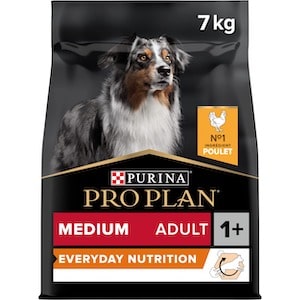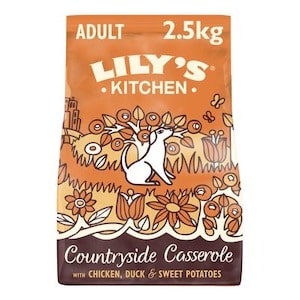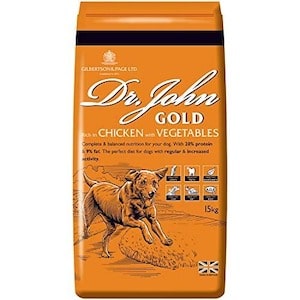As a pet parent, you must be aware that sodium is an essential part of your dog’s diet. Though its requirement is less as compared to other nutrients and minerals, it plays a vital role in the body of your pup. Not only it regulates body fluids but also aids in the normal functioning of the organs and nervous system.
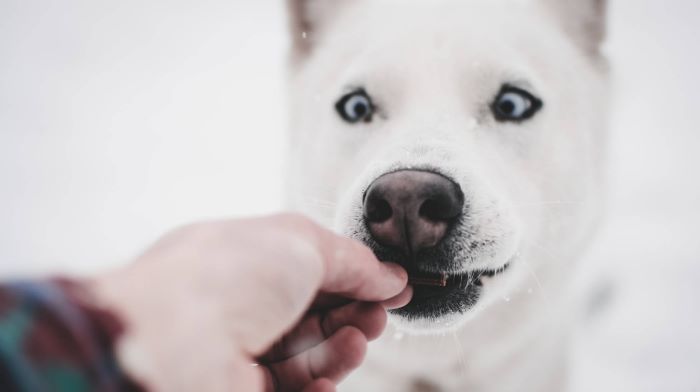
Despite this fact, veterinarians recommend less sodium to some dogs and keep a check on the amount of salt intake. These dogs are asked to consume low-sodium dog food.
But, why these dogs are preferred less amount of sodium? Why does a vet recommend a low-sodium diet and what is a low-sodium dog food? Let’s explore it in detail.
You Might Also Like:
How Much Sodium Does a Dog Need?
Before jumping to what low-sodium dog food is, let us know how much sodium a dog needs in his regular diet. Interestingly, the quantity of sodium can vary depending on the age, size, weight, breed and health concerns of a dog.[1]
According to AAFCO, the minimum requirement of sodium for maintaining an adult dog’s health is 0.08% of dry matter(0.20 g/1000 kcal) whereas, for growth and reproduction, it is 0.3% DM(0.80 g/1000 kcal). AAFCO did not set the maximum limit for sodium intake.
On the other hand, as mentioned by FEDIAF – The European Pet Food Industry, scientific data shows that sodium level up to 1.5% DM (3.75 g/1000 kcal) is safe for healthy dogs.
It is recommended to consume the amount of sodium according to the dietary restrictions of your dog. As per general guidelines provided by Vermont Veterinary Cardiology Services, here is the sodium intake for your dog.
- Dogs with no sodium restrictions require food with at least 0.5% sodium content
- Dogs who require mild sodium restriction should eat foods with between 0.3% and 0.4% sodium content
- Dogs who require moderate sodium restriction should only receive foods with between 0.2% and 0.3% sodium content
- Dogs who require severe sodium restriction should only receive food with less than 0.07% sodium content
However, it is better to double-check your dietary plans with a veterinarian and seek effective guidance if required. Normally, healthy dogs are not affected by an increased amount of sodium. They can excrete excessive sodium through their urines.
What Is a Low-Sodium Dog Food?
You must have heard of a low-sodium diet for humans, which is a low-salt diet. It consists of natural food that helps balance the electrolytes and other functions in your body. But, what is a low-sodium dog food?
Well, just like humans, dogs too need to maintain their wellbeing and a healthy lifestyle. For this, a proper balance of nutrients and minerals is necessary. One of them is salt. Too much or too little salt is harmful to a dog’s health.
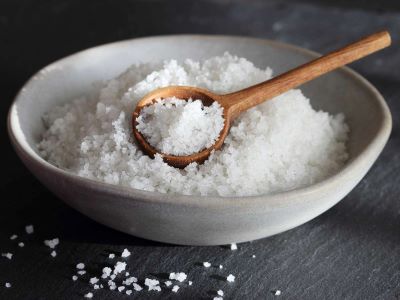
An increased amount of sodium in a dog can be dangerous. These dogs are at risk of heart failure or high blood pressure. Also, dogs who suffer from a high level of sodium have a condition called Hypernatremia. It leads to the constant loss of water from the body, resulting in abnormal blood pressure or risk of heart attack.
Hence, in such cases, the veterinarian recommends low-sodium dog food. A low intake of salt will ensure better immunity and improved health for your dog. With that, it also eradicates the risk of health issues in the dog.
Which Dog Needs a Low-Sodium Food?
A need for a low-sodium diet is usually because of some veterinary diagnosis. Dogs with heart failure, high blood pressure and other issues related to kidney and liver are generally suggested to take a low-sodium diet.
The root cause of these health-related issues is the increased quantity of salt within the bloodstream of the dog. This condition is called Hypernatremia.
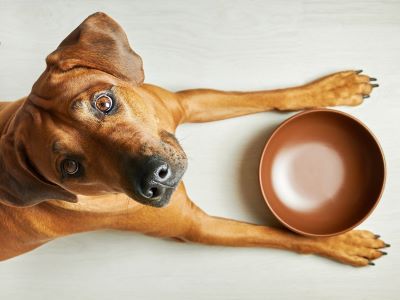
If your dog shows the following signs and symptoms, he is likely to be switched to low-sodium food:
- Feeling more thirsty
- Looks and feels confused, dizzy or disoriented
- Seizures and coma
- Vomiting or diarrhoea
- Excessive urine
- Low or excessive water intake
- Eating or drinking more sodium
Apart from this, if your dog is getting older or has gained too much weight(overweight), then a low-sodium diet can benefit him too. You should always take your vet’s advice before switching your dog to this diet.
Healthier Food When on a Low-Sodium Diet
Along with the low salt intake, you should ensure that your pup is getting other essential nutrients and minerals in the proper proportion. If your pup is on a low-sodium diet for losing weight feed him with high protein food. Dogs are carnivorous and so they need a high amount of protein to keep themselves fit.
Carbohydrates contribute to keeping your pup energized the whole day. It can be a valuable source of additional nutrients. The amount of fat should be reduced as it would not be a healthy option for your pup.
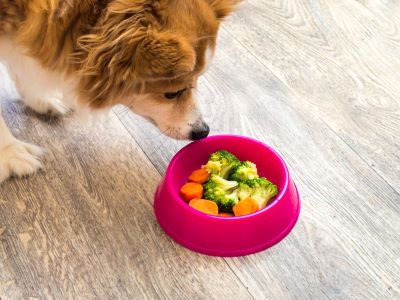
If you want to compare between dry and wet food, then you must go for dry ones. It is believed that wet food contains less sodium as its moisture content dissolves the salt. But, that’s not true! Studies say that wet food contains high levels of sodium which is not good for your dog.[2]
When choosing wet food for your dog on a low-sodium diet, look for the best wet dog food options that are low in sodium and high in protein
It is advisable to check the packaging for nutritional content before buying canned or packaged food for your dog. By this, you can get a rough idea about his consumption.
Low-Sodium Human Food
Apart from dog food, you can also provide your dog with human food that is low in sodium. Here is a list of some items that you can feed your dog.
- Honey
- Cooked eggs
- Maple syrup
- Peeled bananas
- Fresh chickpeas
- Low-salt breakfast cereal
- Pasta (no sauces or flavourings)
- Fresh vegetables/fruit (avoid grapes)
- Rice (plain white or brown rice, not flavoured rice)
- Lean, cooked meats (chicken, turkey, beef, or fish)
- Homemade soup or broth without salt (avoid canned soups)
When feeding your dog human food, be sure not to leave wet or perishable foods sitting out too long. Find out how long can wet dog food sit out before it spoils
Food to Avoid When on a Low-Sodium Diet
A typical diet of a dog consists of completely dry or wet food with supplements in some cases. The diet of every breed varies. Being on a low-sodium diet is to avoid food with more amount of salt and keep control over the amount of salt intake.
Thus, it is important to balance the overall proportion of salt in the daily diet. You should avoid some ingredients when feeding the pup with low-sodium dog food.
Artificial Additives
Packaged foods contain artificial additives like colour, flavour and monosodium glutamate (MSG). These ingredients improve the look and feel of the food as well as its preservative capacity.
However, these ingredients contain a high amount of sodium that is harmful to dogs that are restricted to sodium consumption.
Sodium Nitrate
Sodium nitrate is a type of preservative used in processed food like bacon or ham. And as the name suggests, this too contains sodium in it. Food with even a less amount of sodium nitrate contains a high level of salt that is enough to increase the sodium level of your dog.
Human Processed Food
We humans, have more requirements of sodium as compared to dogs and so processed foods for us contain a high level of salt, which is not suitable for dogs. Consumption of processed food like potato chips and pizza can have detrimental effects on the health of your pup.
Here are examples of some food that you should strictly avoid when your dog is on a low-sodium diet:
- Bread
- Pizza
- Pickled Foods
- Most dog biscuits and treats
- Commercial soups and broths
- Fatty foods (meat fat, cream, etc)
- Cheese (unless marked as low-sodium)
- Condiments (Soy sauce, ketchup, BBQ sauce)
- Canned vegetables (unless marked as no salt added)
- Snack foods (potato chips, crackers, packaged popcorn)
- Deli meats (this includes ham, sausage, hot dogs, bacon, etc)
FAQs
Is dog food high in sodium?
Most commercial dog foods have a decent level of sodium, although some have high levels. Pets having non-life-threatening heart problems don’t necessarily need to be restricted on sodium. But you still should keep an eye on the sodium consumption level of your pet.
What is the maximum sodium for dogs?
The European Pet Food Industry Federation (EPFIF) recommends an upper limit of 3.75 grams of sodium per 1,000 calories. Because sodium is water-soluble, excess amounts of sodium typically pass through the urine. Dogs diagnosed with heart, liver, or kidney disease may require less sodium.
What are the symptoms of high sodium in dogs?
An animal that ingests excess sodium chloride, especially when water is limited, can develop salt toxicosis. Clinical signs vary between species but may include depression, weakness, ataxia, muscle tremors, gastroenteritis, and seizure-like activity.
What percentage of sodium should be in dog food?
Many dog foods contain a very high salt content which makes them edible for your dog but extremely unhealthy. The recommended salt allowance in dry dog food for adult dogs is 0.07% but most dry dog food contains 0.1-0.6% sodium.
Summary
To wrap up, low-sodium dog food is any diet that possibly reduces the amount of salt intake for a dog. It is generally provided to dogs with issues relating to heart, kidney and liver. For guidance on selecting the best dog food for your pup, read our article on how to choose dog food. Remember, the salt intake should be reduced and not completely avoided.
It is advisable to check the nutritional contents of packaged food to ensure the amount of sodium. Moreover, always consult a vet before putting your dog on a low-sodium diet. Hope this article helped you answer – ‘What is a low-sodium dog food?’
References:
- Weber, M., Biourge, V., & Nguyen, P. L. (2016). Digestive sensitivity varies according to the size of dogs: a review from Journal of Animal Physiology and Animal Nutrition
- Brunetto, M. A., Zafalon, R. V. A., Teixeira, F. R., Vendramini, T. H. A., Rentas, M. F., Pedrinelli, V., Risolia, L. W., & Macedo, H. T. (2019). Phosphorus and sodium contents in commercial wet foods for dogs and cats from Veterinary Medicine and Science
